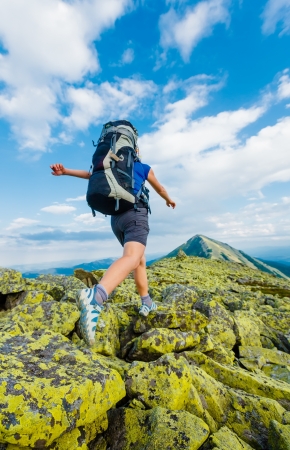1. Understanding the Risks: Common Emergencies in the British Countryside
Walking solo in the British countryside can be a profoundly rewarding experience, offering solitude, breathtaking landscapes, and a sense of personal achievement. However, it is essential to recognise that this environment also presents unique risks, particularly for those travelling alone. The most common emergencies that solo walkers face include sudden weather changes, challenging terrain, and unexpected health incidents.
British weather is famously unpredictable, with conditions capable of shifting rapidly even within a single day. A sunny morning walk can quickly turn hazardous if fog rolls in or rain makes paths slippery and visibility poor. In addition to meteorological hazards, the terrain itself can pose significant challenges. The UK is home to a variety of landscapes—from the rocky ridges of the Lake District to the rolling hills of the Cotswolds and the remote moorlands of Dartmoor. Each brings its own set of difficulties, such as uneven ground, loose rocks, boggy patches, and steep gradients that increase the likelihood of slips, trips, and falls.
Health emergencies are another key concern for solo walkers. Even experienced hikers can encounter issues such as dehydration, hypothermia, heat exhaustion, sprains, or sudden medical conditions like chest pain or severe allergic reactions. Being alone amplifies these dangers, as immediate help may not be readily available.
Understanding these typical dangers is crucial for anyone venturing out alone into rural Britain. Preparation and awareness form the foundation of safety in these beautiful yet potentially unforgiving landscapes.
2. Preparation Before Setting Out
Proper preparation is the cornerstone of a safe and enjoyable solo walk in the UK countryside. Every seasoned walker understands that the British outdoors, while breathtakingly beautiful, can quickly become challenging due to unpredictable weather, remote terrain, and limited mobile reception. Therefore, careful planning is essential to mitigate risks and ensure you are equipped for any emergency.
Route Planning and Mapping
Before embarking on your journey, spend time researching your intended route. Utilise Ordnance Survey (OS) maps—widely regarded as the gold standard for UK navigation—to plot your path and identify key landmarks, possible exit points, and areas of potential hazard such as rivers or boggy ground. Digital mapping apps may supplement traditional paper maps but should not replace them entirely due to possible signal loss.
Key Elements of Route Planning
| Element | Details |
|---|---|
| Route Selection | Choose paths suitable for your experience level; avoid overly ambitious routes when solo. |
| Map Resources | Carry updated OS Explorer or Landranger maps; consider downloading offline map data. |
| Time Estimation | Calculate walk duration including breaks; factor in shorter daylight hours in winter. |
| Checkpoints | Identify safe spots (pubs, villages) along the way where you can seek assistance if needed. |
Informing Others
A crucial but often overlooked step is informing someone of your plans. Share details of your route, expected start and finish times, and check-in points with a trusted friend or family member. If plans change en route, update them whenever possible. This simple precaution can expedite rescue efforts should an emergency arise.
Packing Appropriate Gear
Your kit list should be tailored to both the season and the specific demands of your chosen walk. The weather in the UK can shift rapidly—sunshine may give way to driving rain within minutes—so always pack for worst-case scenarios. Essential items include:
- Waterproof jacket and trousers
- Warm layers (fleece or insulated jacket)
- Hat and gloves (even in summer on higher ground)
- Sufficient food and water for the entire day plus extra rations
- A fully charged mobile phone with portable power bank
- First aid kit with blister plasters and any personal medication
- Torch or headlamp with spare batteries
- Whistle for signalling in emergencies
- Compass and OS map (paper copy)
- Emergency shelter or bivvy bag for remote routes
Packing Checklist Comparison Table
| Essential Items | NICE TO HAVE EXTRAS |
|---|---|
| Waterproof clothing Map & compass First aid kit Phone & power bank Food & water Torch/headlamp Whistle Emergency shelter/bivvy bag |
Trekking poles GPS device Insect repellent Sunscreen Notebook & pen Thermal flask for hot drinks |
Using Local Resources: OS Maps & Weather Checks
The Met Office provides reliable localised weather forecasts—always check the latest updates before departure and monitor throughout your trip if signal permits. Flood alerts, severe wind warnings, or sudden temperature drops are not uncommon in some regions. Cross-reference weather advice with your planned route using OS maps to anticipate exposed ridges or river crossings where conditions might deteriorate rapidly.
Summary Tips for Effective Preparation:
- Plan conservatively: overestimate time needed and underplay physical limits when walking alone.
- Double-check all equipment before setting off—replace batteries and test electronic devices.
- If new to an area, consult local walking groups or visitor centres for up-to-date trail information.
- Create contingency plans: know where you could safely wait out bad weather or seek help.
- Always prioritise safety over schedule—turn back if conditions worsen unexpectedly.
Meticulous preparation not only enhances your enjoyment of the great British outdoors but also significantly increases your resilience should things go awry during a solo walk.

3. Recognising When You’re Lost or in Trouble
One of the most vital skills for solo walkers in the UK countryside is the ability to recognise early signs that you may be lost or facing an emergency. The British landscape, with its rolling hills, dense woodlands, and changeable weather, can quickly turn a pleasant ramble into a disorienting ordeal. Early recognition not only helps prevent panic but also allows you to take rational steps before the situation deteriorates further.
Key Signs You May Be Lost
Several indicators suggest that you might have strayed from your intended path. These include:
- Unfamiliar Landmarks: If you do not recognise any features from your map or route notes—such as paths, walls, stiles, or streams—you may be off course.
- Lack of Waymarkers: The UK’s well-maintained trails often have fingerposts or markers. If these disappear unexpectedly, it could be a warning sign.
- Compass Discrepancies: If your compass readings do not align with your expected direction of travel, double-check your position.
- Noises and Silence: A sudden lack of usual countryside sounds (like distant traffic or livestock) can indicate you’ve moved further from civilisation than intended.
Situations Indicating Potential Trouble
Beyond being lost, certain situations should prompt immediate attention:
- Deteriorating Weather: Rapidly changing weather conditions—common in upland areas like the Lake District or Scottish Highlands—can quickly reduce visibility and increase risk.
- Physical Distress: Injuries, fatigue, dehydration, or hypothermia symptoms are red flags that warrant stopping and reassessing your options.
- Losing Daylight: Underestimating how quickly dusk falls can leave walkers disoriented and at greater risk of accidents.
The Importance of Early Recognition
In the UK countryside, early recognition of trouble is especially crucial due to the remoteness of many walking routes and the sometimes patchy mobile phone signal. Acting promptly—by stopping to check your map and compass, retracing your steps if necessary, or seeking higher ground for a better vantage point—can mean the difference between a minor inconvenience and a serious emergency. Experienced leaders know that acknowledging uncertainty early on is never a sign of weakness; rather, it demonstrates sound judgement and greatly improves the chances of a safe outcome.
4. Immediate Steps to Take if You’re Lost
Finding yourself lost and alone in the UK countryside can be daunting, especially with unpredictable weather and often limited mobile reception. However, your immediate response is crucial for ensuring safety and regaining control of the situation. The following practical guidance, rooted in proven outdoor leadership strategies, will help you manage both your emotions and actions effectively.
Stay Calm: The First Priority
Panic is a natural reaction but rarely leads to productive outcomes. Take a few deep breaths, steady your nerves, and remind yourself that with clear thinking, most situations can be managed. Remember, many walkers have experienced similar challenges on Britain’s moors, fells, and coastal paths—and most find their way back safely by staying composed.
The STOP Approach: Structured Problem Solving
A widely respected method among UK outdoor leaders is the ‘Stop, Think, Observe, Plan’ (STOP) approach. This structured process ensures you don’t make rash decisions that could worsen your predicament.
| Step | Action |
|---|---|
| Stop | Sit down if possible; halt all movement to prevent wandering further off track or into dangerous terrain. |
| Think | Assess your physical state—are you warm enough? Do you have water or food? What time of day is it? |
| Observe | Look around carefully. Are there distinct landmarks—a stream, wall, or copse of trees? Is the weather changing? |
| Plan | Based on what you know and see, decide your next steps: stay put or attempt to retrace your route using visible features. |
Assessing Your Surroundings Effectively
Use all available senses to gather information about your location:
- Landmarks: Identify prominent features such as drystone walls, farm buildings, signposts, or unique natural formations common in British landscapes.
- Shelter: If inclement weather threatens, seek safe shelter—perhaps a hollow in a hedge or a disused barn—avoiding areas prone to flooding or livestock disturbance.
- Paths and Tracks: Listen for distant sounds—traffic from a road, running water—or look for well-trodden paths that may indicate proximity to civilisation.
Document Your Position
If you have a map and compass (or a charged mobile device with OS mapping), try to pinpoint your position relative to known features. Marking your current spot can also be useful if you choose to stay put and signal for help later.
Cultural Note: Be Prepared for Local Conditions
The UK’s countryside offers immense beauty but also presents hazards such as sudden mists on Dartmoor or boggy ground in the Peak District. Always factor these regional quirks into your assessment when deciding whether to move or remain stationary.
By applying these immediate steps with discipline and clarity, solo walkers can greatly improve their odds of remaining safe until they either self-rescue or receive assistance.
5. Communication and Raising the Alarm
When you find yourself lost or facing an emergency as a solo walker in the UK countryside, effective communication can make all the difference. The first priority is to assess whether you have mobile signal coverage. Although much of rural Britain enjoys reasonable reception, there are still numerous “not-spots” where signal may be limited or entirely absent. Therefore, before setting out, always inform someone of your intended route and expected return time.
Using Your Mobile Phone
If you have a signal, your mobile phone is your primary tool for seeking help. Dial 999 or 112—both numbers connect directly to UK emergency services and are free to call, even if you have no credit on your phone. Remain calm and provide clear details about your location, nature of the emergency, and any injuries or risks present. If you cannot speak, listen for instructions: many call handlers are trained to guide silent callers through keypress responses.
Maximising Signal Coverage
If you’re unable to get a signal from your current position, try moving to higher ground or an open space away from dense woodland or steep valleys. Sometimes simply walking a short distance or holding your phone aloft can improve connectivity. It’s sensible to carry a portable power bank to ensure your device stays charged throughout your walk.
The Role of What3Words and Location Apps
Pinpointing your exact location can be challenging in unfamiliar terrain. The What3Words app is widely used by UK emergency services; it divides the world into three-metre squares, each identified by a unique combination of three words. Download this app before your trip and familiarise yourself with its operation—it allows rescuers to locate you with remarkable precision when every minute counts.
Contacting Local Emergency Services
In addition to national emergency numbers, certain regions have dedicated mountain rescue teams or local response units familiar with specific landscapes and challenges. If you’re walking in areas such as the Lake District, Peak District, or Scottish Highlands, make a note of relevant local service contacts ahead of time. These teams often possess specialist knowledge and equipment tailored to local conditions.
Key Takeaways for Solo Walkers
Being prepared with knowledge of how to communicate effectively during an emergency is crucial for anyone venturing alone into the British countryside. Ensure your mobile is fully charged, know how to use location tools like What3Words, and always prioritise raising the alarm swiftly should things go awry. These proactive steps could prove vital in securing timely assistance and ensuring your safe return.
6. Staying Safe While Waiting for Help
In the event you find yourself lost and alone in the UK countryside, your immediate priority is to minimise risk while waiting for rescue. The unpredictable British weather, combined with diverse terrain from windswept moorlands to dense woodlands, demands particular vigilance. Below are essential strategies to help you remain safe and increase your chances of a swift recovery.
Minimising Risk
First and foremost, stay put once you have established that you are lost and have notified emergency services or left a message of your location. Wandering increases the risk of injury and makes it harder for rescuers to find you. Avoid hazardous areas such as steep slopes, fast-flowing water, or boggy ground commonly found in places like Dartmoor or the Lake District. If possible, position yourself on higher ground where you can be more easily seen, but always prioritise safety over visibility.
Maintaining Body Temperature
Hypothermia is a serious threat in the UK’s often cold and damp climate, even during summer months. Utilise any extra clothing layers, waterproofs, or emergency blankets to insulate yourself. Sit on your rucksack or a dry barrier rather than directly on the cold ground. If it’s raining or windy, seek shelter behind natural features like hedgerows or dry stone walls—ubiquitous across rural Britain—to reduce heat loss. Keep moving your fingers and toes periodically to maintain circulation without unnecessarily exerting yourself.
Staying Visible
Being visible to rescuers is crucial. Lay out brightly coloured clothing or kit in an open area, ideally forming an X shape which is universally recognised as a distress signal. If you carry a whistle, use the internationally recognised SOS pattern (three short blasts, three long, three short) at regular intervals. At night, use a torch or headlamp if available—flashing intermittently will conserve battery life while maximising attention.
Safe Shelter Options in the UK Landscape
The British countryside offers both natural and man-made shelter options. Dry stone walls (common in Yorkshire Dales), dense thickets of hawthorn or gorse, and small copse woodlands provide windbreaks and some protection from rain. In open areas such as the Scottish Highlands or Exmoor, look for dips in the landscape that offer respite from prevailing winds but avoid valleys where cold air settles overnight. If carrying a bivvy bag or emergency shelter (both recommended for solo walkers), set up away from running water to avoid flooding risks.
Final Considerations
Your chances of a positive outcome increase significantly if you remain calm and apply these practical safety measures while awaiting help. Remember: the combination of preparation, local knowledge, and sound judgement is your best defence when facing unexpected emergencies alone in the UK countryside.
7. Learning from Experience: Building Confidence for Future Walks
Every challenging situation faced while walking alone in the British countryside offers valuable lessons that can greatly enhance your future safety and confidence. Reflecting on your experiences—whether you navigated an unexpected detour, managed a minor injury, or dealt with sudden changes in weather—builds personal resilience and helps to develop practical skills for the outdoors.
Reflecting on Personal Resilience
After any incident, take time to assess what went well and where there is room for improvement. Did you remain calm under pressure? Were you able to use your map or digital navigation tools effectively? Honest self-reflection helps identify strengths and highlights areas that may need further attention. By acknowledging your own resourcefulness and adaptability, you foster a mindset that is better equipped to handle future emergencies.
Ongoing Skill-Building
Continual learning is key for any solo walker seeking to increase their competence in the countryside. Consider taking local first aid courses, many of which are offered by organisations such as St John Ambulance or The British Red Cross. Navigation workshops run by groups like The Ramblers or Mountain Training UK are invaluable for honing map-reading and compass skills specific to British terrain. These courses not only provide practical knowledge but also offer opportunities to practise skills in realistic scenarios.
Recommended Local Resources
The UK boasts a wealth of resources designed to support walkers. Joining a local walking group—such as those affiliated with The Ramblers or local hiking clubs—can be particularly beneficial. Not only do these groups offer guided walks, but they also serve as excellent platforms for sharing experiences, learning from others, and staying informed about best practices in countryside safety. Many national parks, including the Lake District and Peak District, provide ranger-led workshops on outdoor safety and emergency preparedness.
Building a Supportive Network
Engaging with online communities like Walkhighlands or the Ordnance Survey’s GetOutside initiative can further enhance your knowledge base. These platforms allow walkers to exchange advice, share recent route conditions, and stay updated on any region-specific hazards. By actively participating in these networks, you are not only investing in your own safety but also contributing to the broader culture of responsible walking in the UK countryside.
Ultimately, each solo walk—regardless of whether it goes smoothly or presents unexpected difficulties—is an opportunity for growth. Through reflection, targeted skill-building, and engagement with local resources and communities, you will continue to develop the confidence and capability needed for safe and rewarding adventures across Britain’s diverse landscapes.


